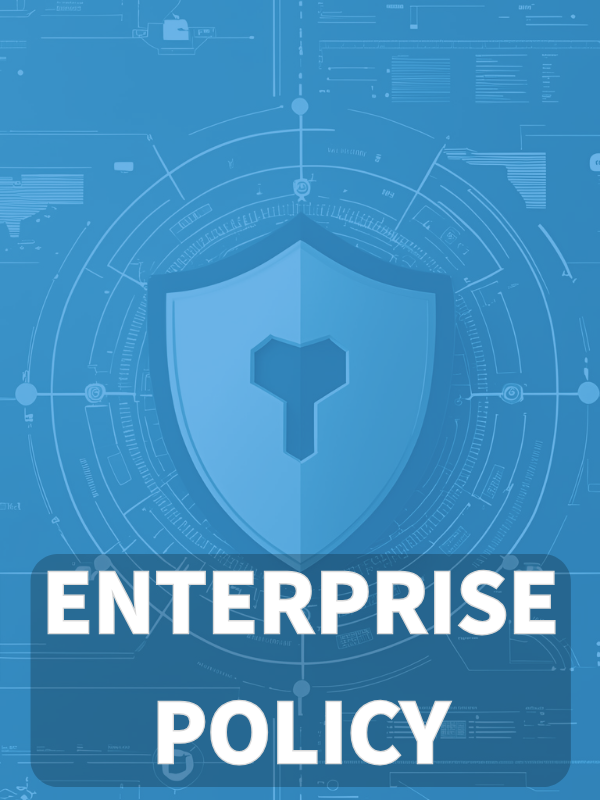Overview
The Data Protection and Privacy Policy establishes the organization's approach to lawful, secure, and compliant handling of personal data in line with global standards and regulations. It details roles, responsibilities, and technical controls required for privacy, addressing all aspects from data collection and subject rights to breach management and third-party oversight.
Privacy by Design Compliance
Mandates privacy-by-design and privacy-by-default for all systems, services, and processes.
Lawful Data Processing
Ensures all personal data is collected, processed, and stored in accordance with global privacy laws.
Robust Data Subject Rights
Upholds data subject rights such as access, erasure, and rectification with formalized procedures.
Read Full Overview
Policy Diagram

Click diagram to view full size
What's Inside
Scope and Rules of Engagement
Roles and Responsibilities
Privacy by Design and Default Principles
Data Subject Rights Enforcement
Retention and Secure Disposal
Breach Notification and Third-Party Oversight
Framework Compliance
🛡️ Supported Standards & Frameworks
This product is aligned with the following compliance frameworks, with detailed clause and control mappings.
| Framework | Covered Clauses / Controls |
|---|---|
| ISO/IEC 27001:2022 | |
| ISO/IEC 27002:2022 | |
| NIST SP 800-53 Rev.5 | |
| EU GDPR |
Articles 5612–2325283032–34Recital 78
|
| EU NIS2 | |
| EU DORA | |
| COBIT 2019 |
Related Policies
Audit Compliance Monitoring Policy
Enforces scheduled assessments of privacy program effectiveness, enforcement, and corrective action.
Information Security Policy
Establishes the overarching security governance principles that underpin this privacy policy.
Risk Management Policy
Defines the organization’s risk treatment methodology, essential for assessing privacy risks and DPIA processes.
Data Classification And Labeling Policy
Guides the categorization of personal and sensitive data, forming the basis for applying appropriate privacy controls.
Data Retention And Disposal Policy
Directly supports privacy requirements under GDPR for data retention and secure disposal.
Data Masking And Pseudonymization Policy
Establishes controls for reducing identifiability of personal data through masking and pseudonymization.
Incident Response Policy
Outlines breach response protocols that integrate with the privacy breach handling and notification timelines.
About Clarysec Policies - Data Protection and Privacy Policy
Effective security governance requires more than just words; it demands clarity, accountability, and a structure that scales with your organization. Generic templates often fail, creating ambiguity with long paragraphs and undefined roles. This policy is engineered to be the operational backbone of your security program. We assign responsibilities to the specific roles found in a modern enterprise, including the CISO, IT Security, and relevant committees, ensuring clear accountability. Every requirement is a uniquely numbered clause (e.g., 5.1.1, 5.1.2). This atomic structure makes the policy easy to implement, audit against specific controls, and safely customize without affecting document integrity, transforming it from a static document into a dynamic, actionable framework.
Role-Based Accountability
Defines specific responsibilities for CISO, DPO, Legal, IT, and Data Owners, enabling clear governance and policy enforcement.
Integrated Audit and Exception Management
Includes registers for privacy risks, exceptions, and audits, streamlining compliance tracking and remediation.
Automated Retention & Secure Disposal
Enforces technical retention schedules and secure deletion requirements, ensuring defensible lifecycle management.
Frequently Asked Questions
Built for Leaders, By Leaders
This policy was authored by a security leader with 25+ years of experience deploying and auditing ISMS frameworks for global enterprises. It's designed not just to be a document, but a defensible framework that stands up to auditor scrutiny.
